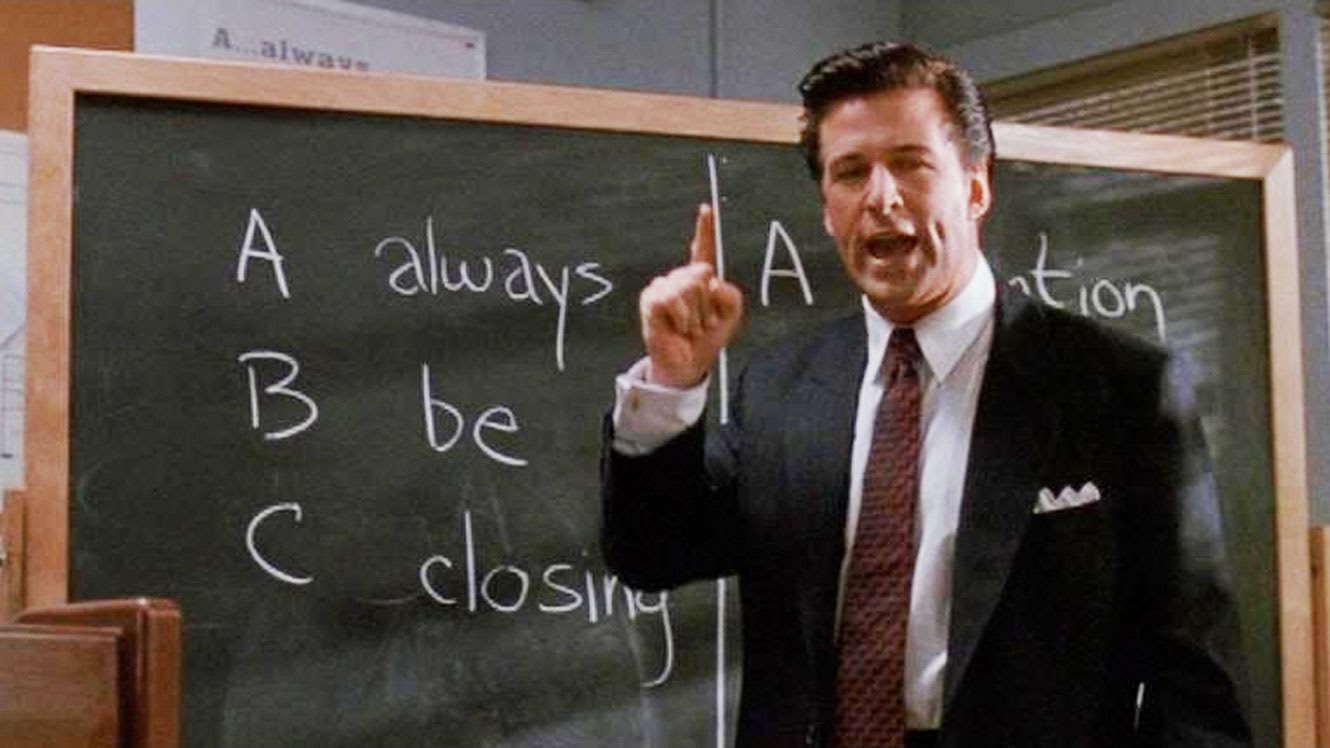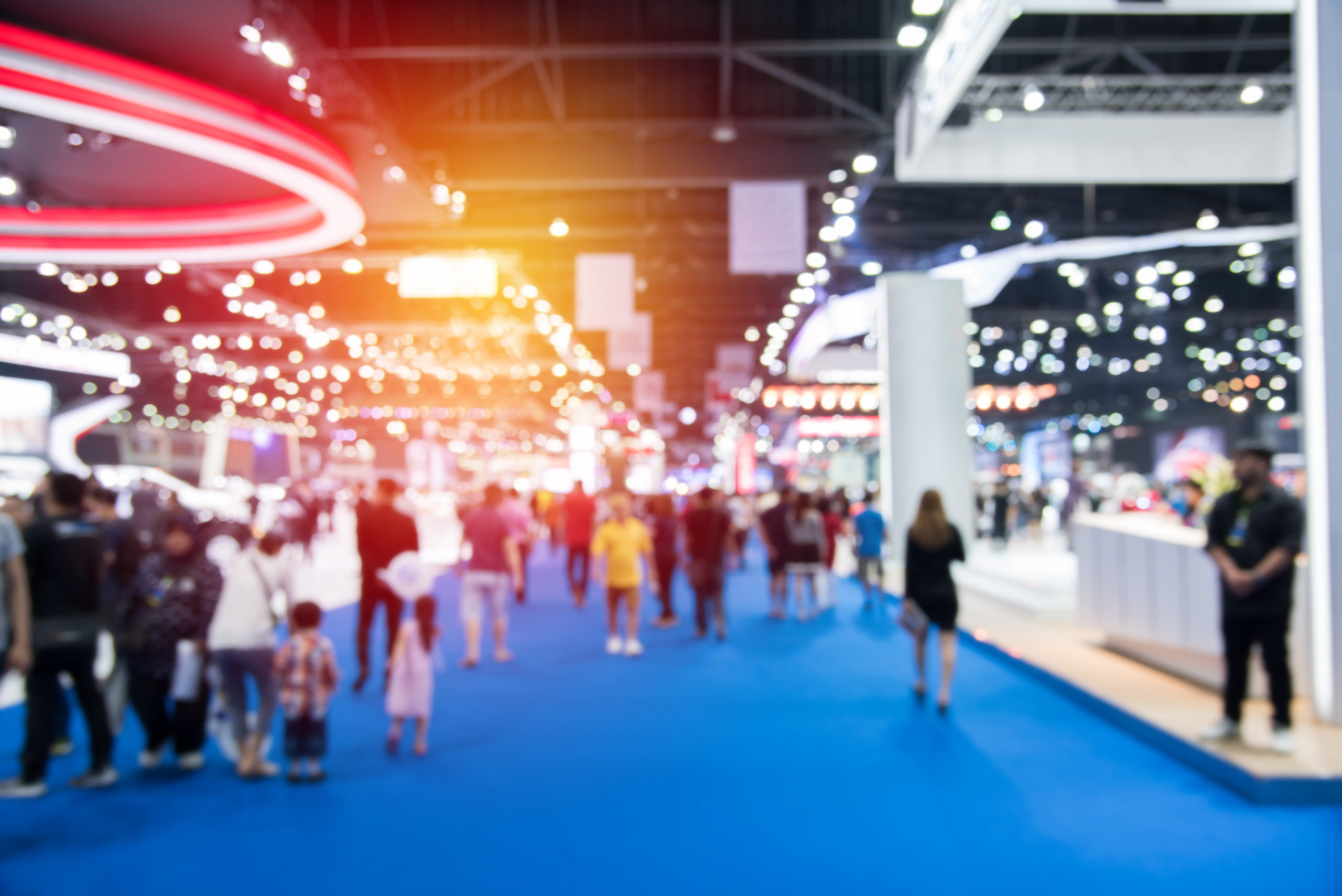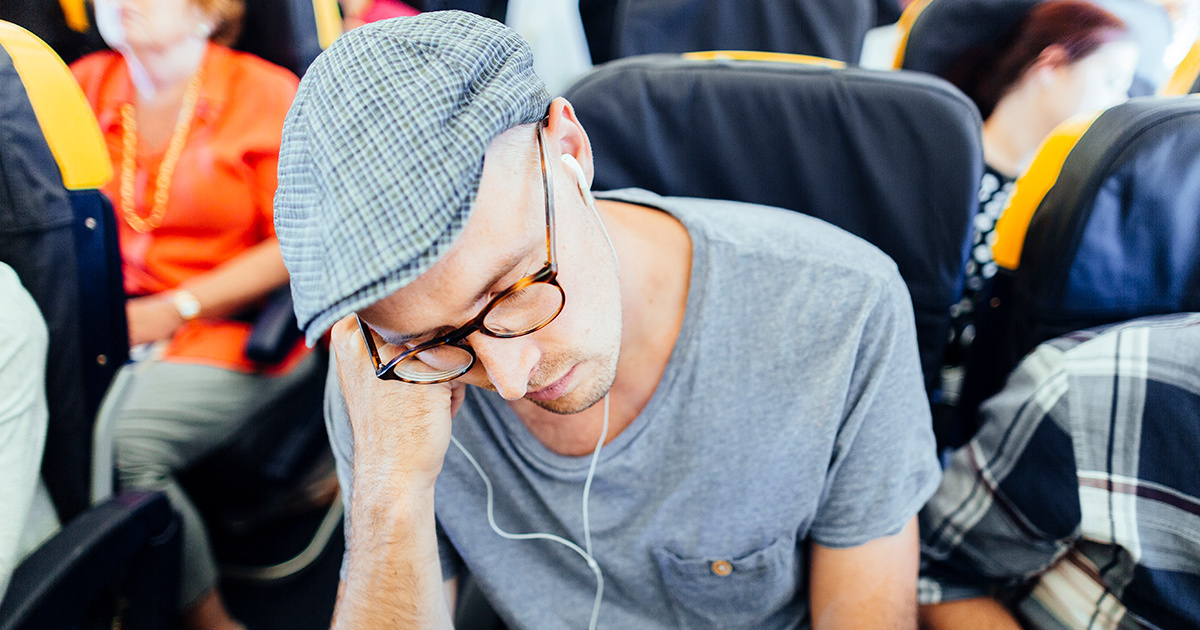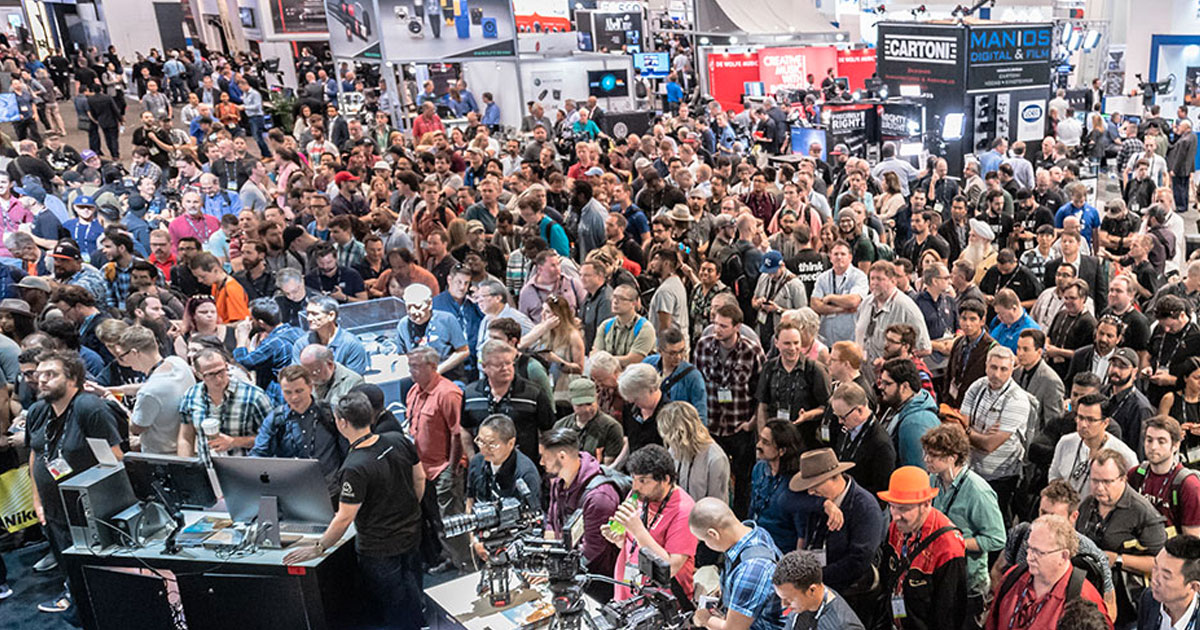A LIFEBLOOD OF THE INDUSTRY TURNS RIPE FOR TRANSFUSION INTO A NEW VIRTUAL BODY.
This is the third in a series of articles, written by Wrecking Ball SVP & General Manager Bob Donlon, on the subject of shaping the future of virtual events and conferences.
If I blindfolded and kicked you into the middle of an exhibit hall in any convention center in the world, there’s no way you’d be able to tell me what city, state, or country you were in. No matter where you are, the odoriferous off-gassing of low-grade carpeting combined with migraine-inducing lighting and a sound that can only be described as a hundred FM radios all tuned to a different station all add up to “exhibit hall”.
Just like the uniformity of the sensory experience itself, there is uniformity to the motivation of exhibitors. That motivation is money. Companies exhibit at conferences to acquire sales leads, build awareness of their brand, and (in some cases) to engage in good-old-fashioned “buy something now or I’m gonna punch you in your face”.

“Put. That. Coffee. DOWN! Coffee is for closers ONLY.” (Image credit: New Line Cinema)
Being called upon by your employer to staff a conference exhibit booth is like being entered into a reality show called “Enterprise Gone Retail”. No matter where you sit on the corporate totem pole, you’re going to be an “Apple Store Employee” for the day. If you’re lucky you’ll get to be one of the “Geniuses” behind a demo pod, otherwise you may wind up becoming one of the floor-walkers who has to answer the question “so, what does your company do?” five hundred times a days. For some of us it’s being “face-to-face with customers,” and for others it’s “having customers in your face”.
A great deal of effort, human power, money, and ability to go-with-the-flow are required to pull off a successful conference exhibit. I’ve had more than my fair share of experience working exhibits at conferences all over the world as a demo-jockey, stage presenter, and one of those stand around and answer “what do you guys do” people.
We’ve also done it ourselves at Wrecking Ball, and got to experience the entire end-to-end of what it takes to pull it off first-hand.

Our exhibit booth at the eMerge Americas conference in the Miami Beach Convention Center
Let’s take look at the “customer journey” of the live conference exhibitor. Transforming the live exhibit into a virtual experience is one of the greatest challenges we face right now, and we need to figure it out soon because a lot of money flows in this part of the industry —not just to and from exhibitors — it’s a major funding & profit center for the conferences themselves.
Here’s a fictitious, but highly realistic hypothetical use-case of a live conference exhibitor from the days before the world went all wacky.
TV star Danny Partridge has a business selling autographed pictures of himself as well as his own line of branded merchandise. For those of you who don’t know who Danny Partridge is, he was a character in the hit TV show “The Partridge Family” about a family of kids and their mom who had a band that toured the country in a school bus. They mainly performed in cocktail lounges.
- Looking for ways to grow his autographed picture and branded merchandise business, Danny decides that San Diego Comic Con would be a great conference for him to have an exhibit at. Since his target audience will be there, and the attendance averages 130,000 people or so, he could make some serious bank.
- He gets in touch with one of the sales reps at Comic Con and she recommends a 20x30 foot exhibit space at a cost of $10,000. Seems like a pretty good chunk of real estate, so he goes for it.
- Once he signs the contract, the sales rep tells him he’s going to need an eye-catching exhibit booth because all the exhibitors will be competing for attention. She recommends an exhibit design company who can custom build something specific to his brand.
- The exhibit design company creates a Partridge Family themed exhibit complete with TV monitors that will play episodes from the show, a stage that has original props for people to look at, and a sound system to play songs from their records. The design and buildout of the booth is $25,000. Danny is now committed for a total spend $35,000 but he knows it’s going to be worth it — he’ll earn that back, and then some.
- The booth needs to be broken down, loaded into road cases, and shipped from the design company in Los Angeles to the convention center in San Diego. Once it gets there, it’ll have to be loaded in and re-constructed by a crew of union specialists. Labor and transport fees cost $5,000. (There may also be some bribes involved, that’s a whole other story that I’m not getting into because I don’t wanna get punched in the face.) Danny’s total spend is now $40,000. He raids his kids’ college fund — after all community college is free in LA, no?
- He arrives at the convention center the day before the conference opens. The exhibit hall is massive! It takes him nearly an hour to find his booth because it’s tucked waaaay in the back in what’s bound to be a low-to-no traffic area. He calls up the conference sales rep to ask her WTF but she tells him that “premium locations” are reserved for “platinum sponsors” and she’d love nothing more than to discuss how he can purchase such a sponsorship for next year’s convention. There’s nothing she can do for now, sorry.
- Because of the crappy location of his exhibit, he’s going to have to work harder to grab peoples’ attention. What can he possibly do at this late stage of the game? How about making use of that bandstand! He knows of a Partridge Family tribute band, they wear the costumes and all and look & sound like the real deal. He calls their manager, turns out they’re available, and they’re willing to work the duration of the 3-day show for $3,000. He decides to go for it, but before signing the contract he finds out that his cast-mates from the original TV show still perform as The Partridge Family. They charge way less than the tribute band. He hires them at a total cost of $200.
- Oh, but what about the SWAG! The other exhibitors are giving away some really cool stuff to draw people in. Since The Partridge Family’s music is considered “bubblegum” he calls up a corporate promo company and rush-orders 5,000 gumballs with his face printed on ’em. Cost including rush fees is another $1,200. Total spend at this point is now $41,400.
- He’s hired 3 people to staff the booth to handle sales, collect leads, and do traffic control. They, and he, will need hotel rooms and meals. Hotels always jack prices during big conferences so a room at the nearby Motel 6 will cost $666/night and he’s going to need to get 4 of them. For the 3 day duration of the conference, staff salaries will cost $3,000, hotel rooms $8,000, and add in around $1,200 for meals. His total cost is now $53,400.
- The head of the crew setting up his both walks over to tell him there’s nowhere to plug in the lighting, video screens and the amps for the band. Danny forgot to order electricity — yes, the convention center makes you pay extra for that, and you also need to pay for one of their staff electricians to come over and plug everything in for you. An electricity drop that can handle his power needs plus the electrician’s time to basically do nothing more than plug power cords into outlets amounts to another $1,500. Danny takes out a 2nd mortgage on his house as the total cost is now $54,900.
- One of his staff walks over to ask how they’re going to collect leads for follow-up after the conference. All the attendees have bar codes on their badges for exhibitors to scan for lead capture and they don’t have a scanner. Oh, you need to rent that too — lead capture scanner for 3 days = $1,000 = total of $55,900
- Wow there’s a lot of expensive gear in this booth and stuff tends to “walk away” from conference exhibits after hours. Danny hires a graveyard-shift security guard to watch over the stuff at a cost of $750. He’s now in for $56,650.
- Finally the show opens! There’s a mad rush of attendees and the booth is a huge success! Danny is surrounded by so many adoring fans he’s completely overwhelmed. They are thrilled to have face time with him, and he forms lasting connections that will result in loyal “customers” for life! This couldn’t happen any other way and is the key component of what makes the live conference exhibit unique. The merchandise flies off the shelf. He develops carpal tunnel from signing so many autographed pictures. Lead collection is through the roof. Even though the drummer in the band has a heroin addiction and keeps nodding out in the middle of songs, the music and the video and everything else is such a magnet that people are now lining up in the aisle to get in.
- It’s the second day of the show. Things are slowing down. People are mainly coming by for the giveaway gumballs — a man of gargantuan proportions grabs about 50 of them to stuff in his pockets and crams another 8 or so into his mouth.
- It’s last day of the show and it’s completely dead — traffic has dwindled to nearly zero. He and his staff just want to pack up and go home already, but overall it’s been a smashing success. He’s raked in $100,000 for a total profit of $43,350! Not only that, he’s got over 5,000 leads for follow up and many of those people will wind up buying even more stuff off his website. Nice!
- The conference is finally over. As the last stragglers of attendees exit the exhibit hall, an executive from ABC wanders by and takes note of the Partridge Family branding, videos, and music. His network owns the rights to all that so he calls up some of his goons who come over and sledgehammer the entire exhibit to the ground. Well, at least Danny won’t have to pay to have the booth shipped back up to LA and stored until the next conference, because there won’t be a next conference!
- Danny settles the copyright infringement lawsuit for $200,000 resulting in a net loss of $156,650. He eats candy bar lunches for the next 7 years.
Despite the fictitious nature of our “case study subject”, anyone who’s ever been involved in this side of the business knows that everything up to and including item 15 above is real. There are an infinite number of potential curveballs in the conference exhibits game.
We have, however, demonstrated through this case study that (if done the right way) live conference exhibits have the potential to drive substantial amounts of revenue, heighten consumer mindshare, build brand awareness, and grow customer loyalty. It’s a shame that the conference exhibit in its physical form is a gone, gone, goner — at least for a very long while. But, as that door closes, another opens — there is now huge, untapped potential to shift the paradigm of what a “conference exhibit” means. We have a present opportunity to evolve the model and make even more revenue flow for exhibitors and conferences alike.
How we re-imagine and re-shape this into a virtual form may be the biggest challenge the industry currently faces, and it’s IMPERATIVE to figure out if the industry is to survive. It’s an economic lifeblood, and we just can’t let it bleed out. It’s time to begin that discussion — I look forward to diving in. Stay tuned for my next article in the series which will be about just that.
Thanks for reading! We are always happy to have informed conversations on the topic of virtual events or digital marketing in general.



